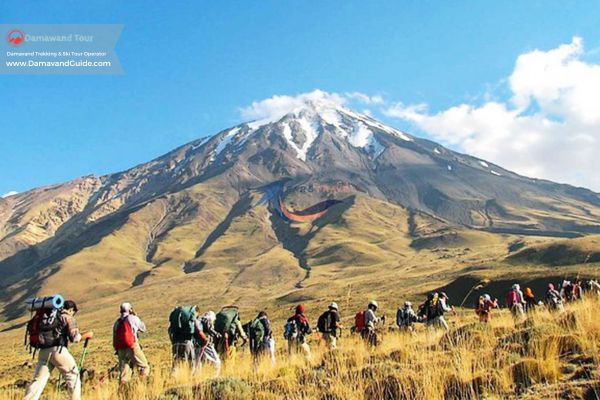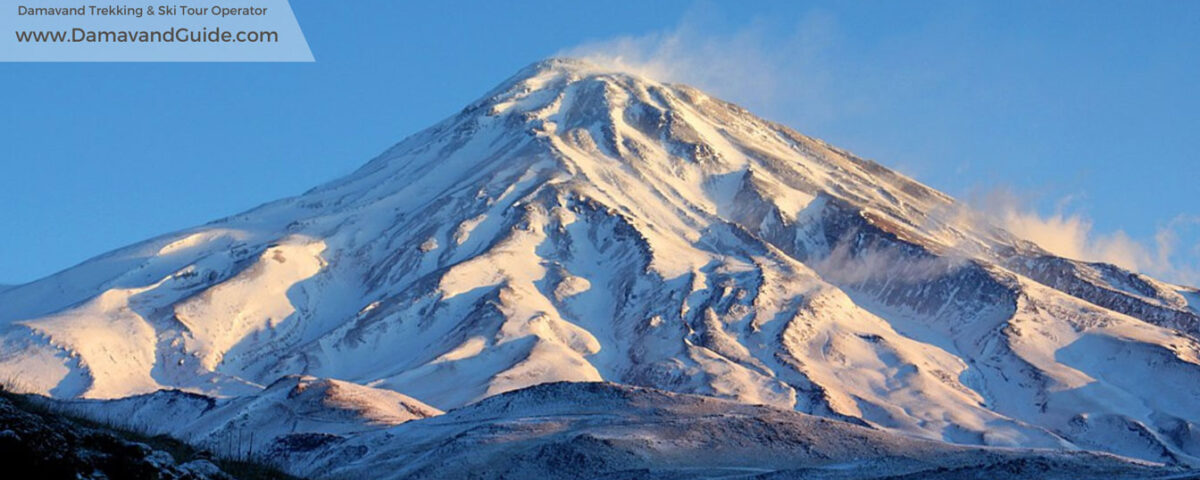
Zard Kuh | Guide to Climbing Zardkooh in Iran
February 28, 2024
The Tallest Volcano in Asia
March 9, 2024History of Mountaineering in Iran: Mountain Activities and Climbing
Introduction
Mountaineering, as a sport where people climb mountains using special equipment, has been popular in Iran for a long time. This activity, unique due to its lack of worldwide uniform rules and definitions, is enriched by Iran’s rich history and culture. In this article, we explore the history of mountaineering in Iran, from ancient times to the present.
History of Mountaineering in Iran
Mountaineering in Iran has deep roots in the country’s ancient history and culture. Since ancient times, Iranians have been familiar with mountains and their challenges. Battles like Thermopylae and campaigns by Xerxes are examples from those times, showing Iranians’ ability to use mountains to their advantage. Ancient legends mention Arash the Archer, who climbed Mount Damavand to mark the border between Iran and Turan by shooting an arrow. The first recorded instances of mountaineering in Iran go back to the ascents by Iranian commanders Artakh and Bubrandan to Mount Athos during Xerxes’ reign for mapping purposes to construct a water channel for the Iranian navy, according to George Sarton’s “History of Science.”
The Roman Emperor Hadrian climbed Mount Etna, standing at 3350 meters, to watch the sunrise. Evidence suggests advanced mountaineering in Iran by the end of the 5th Hijri century during the Seljuk and Ismaili periods. The book “Lord of Alamut” mentions:
“After surveying the mountain, climbers concluded that if the peak was uninhabited and no stones were thrown at them, they could climb from the south side to reach the top. They also decided to carry a rope for communication with the base and to transport essential equipment for installing a pulley. Once the pulley was installed, it could be used to lift other equipment, thus establishing a more effective communication between the base and the peak. The climbers announced they would bring iron poles to install as steps on the mountain’s slope to facilitate their ascent to the peak.”
Iran Mountaineering in the Middle Ages
During the Middle Ages, mountaineering was mostly part of exploration and military missions. Records of exploratory efforts by individuals like Abudalf and Naser Khosrow to Damavand reflect Iranians’ interest and curiosity about mountains and heights.
Modern Era of Mountaineering in Iran
With the 14th century Hijri Shamsi, mountaineering became a sport in Iran. The establishment of mountaineering clubs, significant ascents to high peaks like Damavand, Tochal, Alam-Kuh, and Sabalan, and the emergence of renowned climbers mark the development of this activity in Iran.
Iran Mountaineering Equipment
With the expansion of mountaineering, related equipment entered the market. Mountaineering shoes, backpacks, poles, and technical gear like ropes and carabiners are essential for this sport.
Mountaineering Organizations in Iran
The establishment of the Mountaineering and Ski Federation of Iran and the publication of specialized magazines indicate efforts to organize and enhance the sport’s level in Iran. Offering training courses and issuing certificates for coaches are steps towards increasing safety and skills among climbers.
Impact of Mountaineering on Iranian Culture and Society
Mountaineering in Iran is not just a sport but a part of the national culture and identity. It plays a significant role in strengthening nationalism and improving the community’s health, connecting people to nature and their country’s history. Promoting mountaineering among youth and families contributes to environmental awareness and fosters teamwork and collaboration.

Mountaineering in Iran and Tourism
Mountaineering in Iran has great potential to attract domestic and international tourists. Mount Damavand, as the highest peak in the Middle East, attracts many climbers worldwide every year. Developing mountaineering tourism can increase regional income and introduce Iranian culture and nature to tourists. Organizing equipped and safe mountaineering tours, especially in mountainous areas like Alborz and Zagros, can significantly contribute to this goal.
Training and Safety in Iran Mountaineering
Training in mountaineering skills and emphasizing safety principles are primary priorities. Educational courses by the Mountaineering Federation and sport climbs help climbers engage in mountaineering activities with the necessary knowledge and skills. Learning first aid principles, using technical equipment, dealing with emergencies, and protecting the environment are important topics in these courses.
Role of Women in Iranian Mountaineering
Iranian women have played a significant role in developing and enhancing mountaineering. Their participation in climbing high peaks and active involvement in mountaineering activities reflect changing attitudes and equal opportunities for women in this sport. The successes of female climbers on national and international stages serve as inspiration for future generations.
Challenges and Opportunities in Iranian Mountaineering
Mountaineering in Iran faces challenges, including access to standard equipment, maintaining safety in ascents, and developing mountain tourism infrastructure. However, numerous opportunities for growth and development can be achieved with proper planning and adherence to international standards.

Mount Damavand: Symbol of Iranian Mountaineering
As Iran’s highest mountain, Damavand attracts climbers throughout the year, with many ascents annually. One of the oldest recorded attempts to climb Damavand was by “Abudalf,” an Arab geographer, who climbed part of Damavand more than a thousand years ago but did not reach the peak. He reported a large spring and sulphur stones around it.
In his travel, Naser Khosrow mentioned a well on Damavand’s summit that extracts sal ammoniac and sulfur. One author of “The Countries and News of the Servants” quoted locals claiming they reached the flat summit of Damavand, covering a hundred acres, after five days and nights, although it appears conical from a distance. These reports suggest that the first recorded ascents of Damavand date back over a thousand years.
The first European attempts to climb Damavand took place between 1793 and 1798. “Olivier,” a French natural scientist representing the French government, attempted to climb Damavand in 1798 but did not reach the summit. He encountered sulfuric rock pieces at about a third of the mountain’s height and described large, terrifying volcanic rocks as regular pentagonal columns.
Conclusion
Mountaineering in Iran, with a rich history and long tradition, stands out as one of the most attractive sports and recreational activities among Iranians. It not only contributes to physical health and morale but also introduces Iran’s culture, nature, and history to the world. Considering its vast potential, mountaineering in Iran can play a significant role in sustainable development as a major part of sports and tourism.
Mount Damavand Climbing Guide is your essential resource for conquering the highest peak in Iran. With the support of the Iran Mountaineering and Sport Climbing Federation, climbing in Iran has become more accessible and safer for both local and international adventurers. The federation plays a key role in promoting mountaineering and sport climbing across the country, ensuring that climbers are well-prepared and informed.
Damavand Peak, part of the Alborz mountain range, is not just a popular destination for mountaineering but also a symbol of Iran’s natural beauty and cultural heritage. For those new to climbing or looking to improve their skills, a detailed guide can offer insights into the best routes, necessary gear, and safety tips. The guide also highlights the importance of understanding the terrain and weather conditions, which are crucial for a successful ascent.
With the right preparation and guidance, your experience on Damavand Peak will not only be challenging but also deeply rewarding.




